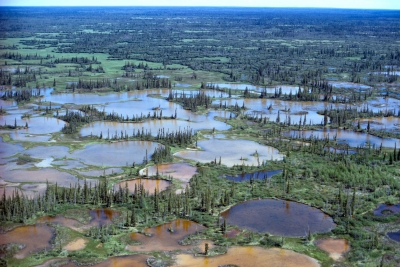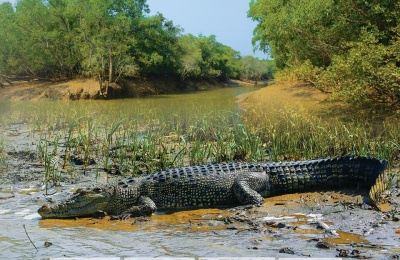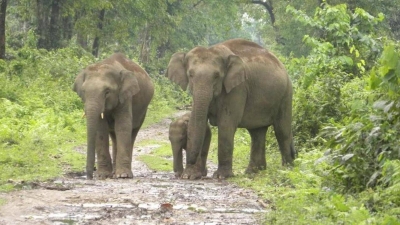
Spread across more than 40,000 sq km along the boundary between Alberta and the Northwest Territories in Canada, the Wood Buffalo National Park covers large swathes of forests, wetlands, and prairies. The Peace-Athabasca Delta located within the Park is one of the world's largest freshwater inland river deltas. It attracts several thousand birds, in addition to many animal species. Canada's largest national park, this UNESCO World Heritage Site nurtures the world's largest population of wood bison, numbering a few thousands. This makes the population the largest free-roaming herd left in the world. And not just that. The Park is the last remaining natural nesting site for an endangered bird species - the whooping crane. Also, two of the wetlands within the region are wetlands of International Importance under the RAMSAR convention. The Park's large size and low concentration of humans have played a role in the protection of the ecosystem to a certain level, but it is said that the lack of political will to conserve it is of grave concern.
Wildlife
Though the Park is most noted for its population of wood bison and whooping crane, it nurtures a variety of birds and animals. The region is home to more than 40 species of animals, including black bear, wolf, moose, fox, beaver, lynx, marten, and snow-shoe hare. Among the several species of birds in the area are falcons, sandhill cranes, hawks, eagles, and owls. The place also falls in the migratory route of several thousand ducks and geese.
Threats
According to the International Union for Conservation of Nature (IUCN), the 'conservation outlook for this site has been assessed as "significant concern" in the latest assessment cycle (2020). Way back in 2016, UNESCO researchers had cautioned that industrial development around the region was progressing at a great speed without its impact being studied properly. Further, upstream projects, two dams, and a relatively new hydroelectric project have together threatened to weaken water flow in the delta. In addition, "oil and gas operations in the northern reaches of Alberta continue to draw large amounts of water to sustain their operations". With mining sanctions too joining the list, the pressure of development on the water resources increased, with concerns that it could affect both wildlife and the indigenous people of the eco-sensitive region. This also means threat to the wood bison and whooping crane populations.
Following this, UNESCO gave Canada a year "to develop a solution to stem the rapid deterioration of the park", and warned hte government that 'inaction would "constitute a case for recommending inscription of Wood Buffalo national park on the List of World Heritage in Danger". After this Canada was given a December 1, 2020 deadline for submitting "a progress report on conservation efforts" in the region, which the country missed. It sought an extension and submitted the report by 21 the same month, addressing "specific UNESCO concerns and 14 pages outline whether each of the 142 items in the action plan are completed, underway, not started or not due yet". Meanwhile, earlier this year reports said "Canada has pledged an extra $59.9 million" to save the place, though many conservationists and indigenous people are concerned and sceptical of the promise due to what they see as the government's lack of commitment to the cause.
Picture Credit : Google


